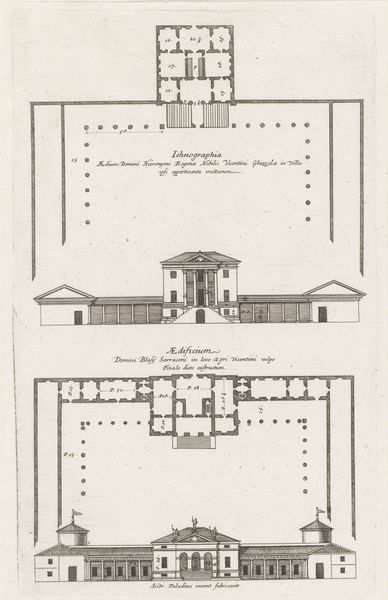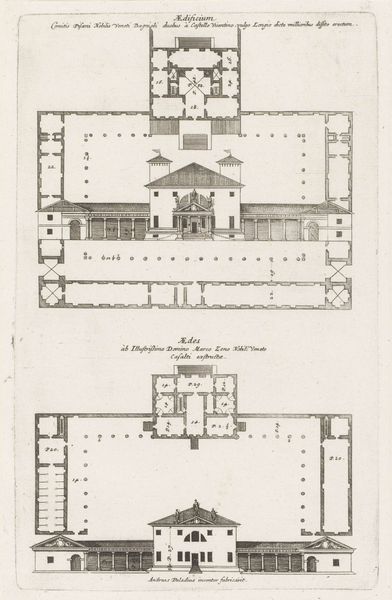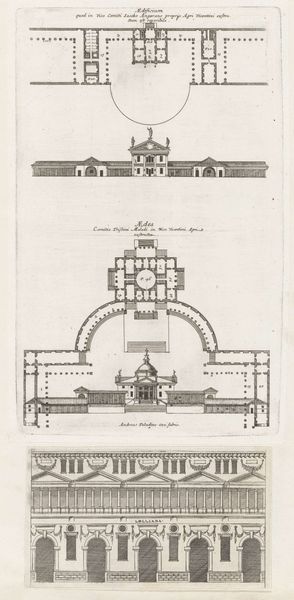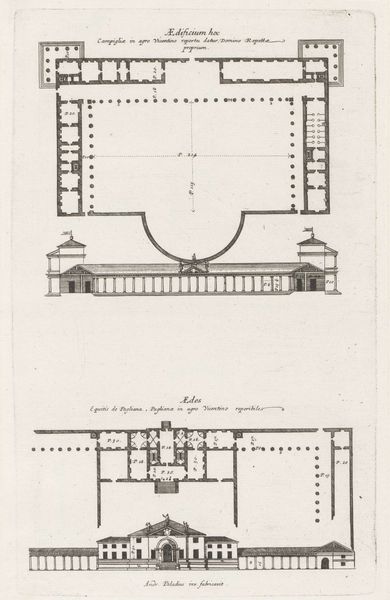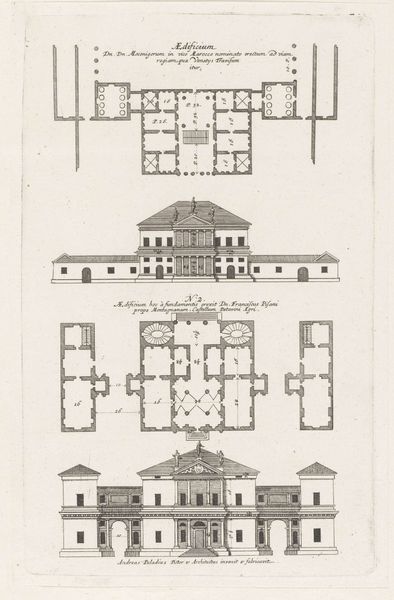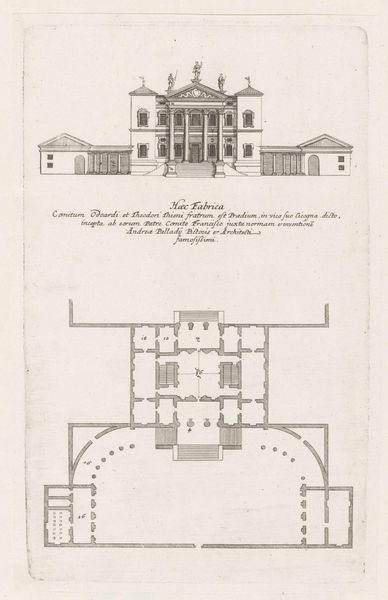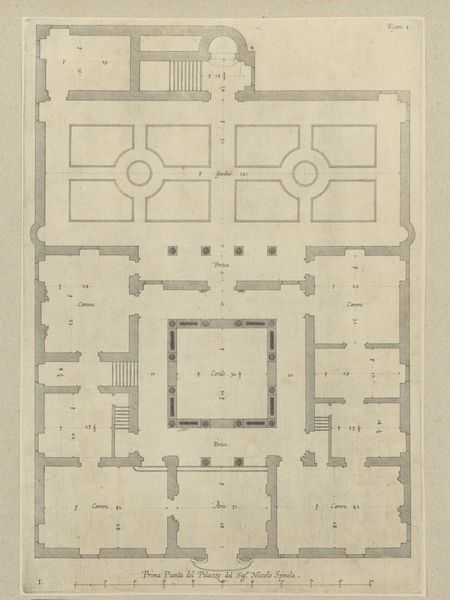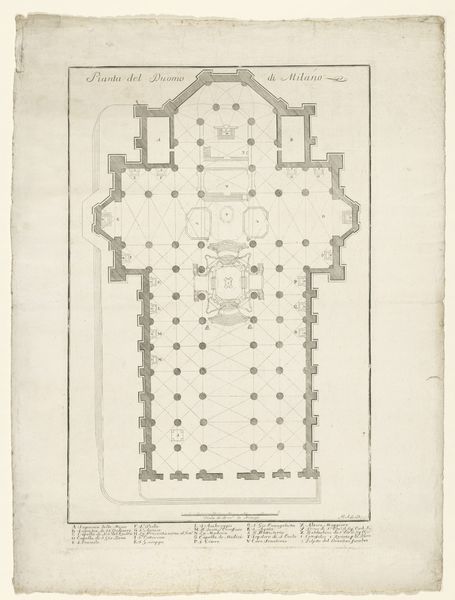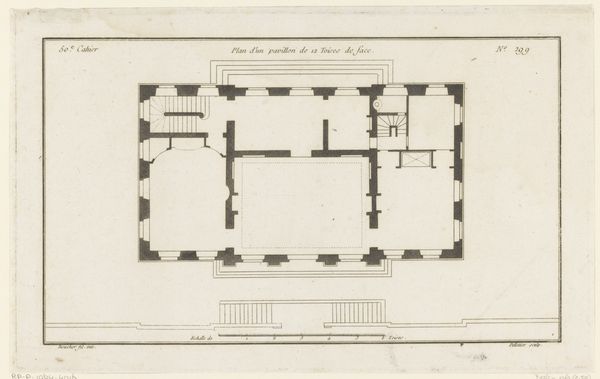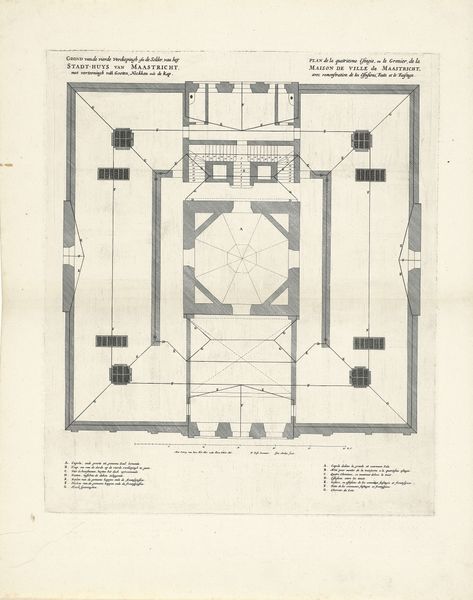
Plattegronden en façades van twee villa's ontworpen door Andrea Palladio 17th century
0:00
0:00
drawing, print, etching, paper, ink, architecture
#
drawing
# print
#
etching
#
landscape
#
paper
#
form
#
ink
#
geometric
#
architectural drawing
#
line
#
italian-renaissance
#
architecture
Dimensions: height 313 mm, width 199 mm
Copyright: Rijks Museum: Open Domain
Editor: This is an etching from the 17th century entitled "Plattegronden en façades van twee villa's ontworpen door Andrea Palladio," showing architectural drawings in ink on paper. The buildings seem really symmetrical, and that linear style reminds me of blueprints. What catches your eye in this piece? Curator: Well, consider the materiality of the drawing itself. Ink, paper, and the etching process - these were all commodities with very specific values and access within 17th century society. The crisp lines aren’t just aesthetic; they are a product of skilled labor and the conscious decisions behind production. Who had the means to commission, create, and circulate such precise architectural plans? Editor: So you are less focused on Palladio’s design itself, and more on how this print was actually made and distributed? Curator: Precisely! Look at the relationship between the artisan who etched the plate and the patron who likely funded its creation. Etchings like these served multiple functions. On one hand, demonstrating the patron’s sophisticated knowledge of design. But also disseminating design and controlling aesthetic standards. How were these prints used by builders or other architects? Editor: I guess I hadn't thought about it that way. It's easy to focus on Palladio's name, but the etching process itself was work, a material process, a whole set of economic relationships! Curator: Exactly. The clean lines we see celebrate not only design, but also a network of workshops, materials, and capital. And each copy disseminated becomes part of the consumption cycle. Now how might mass production impact similar artistic projects now? Editor: That's something to think about. I learned to really consider how class and materials intertwine when discussing historical pieces!
Comments
No comments
Be the first to comment and join the conversation on the ultimate creative platform.
